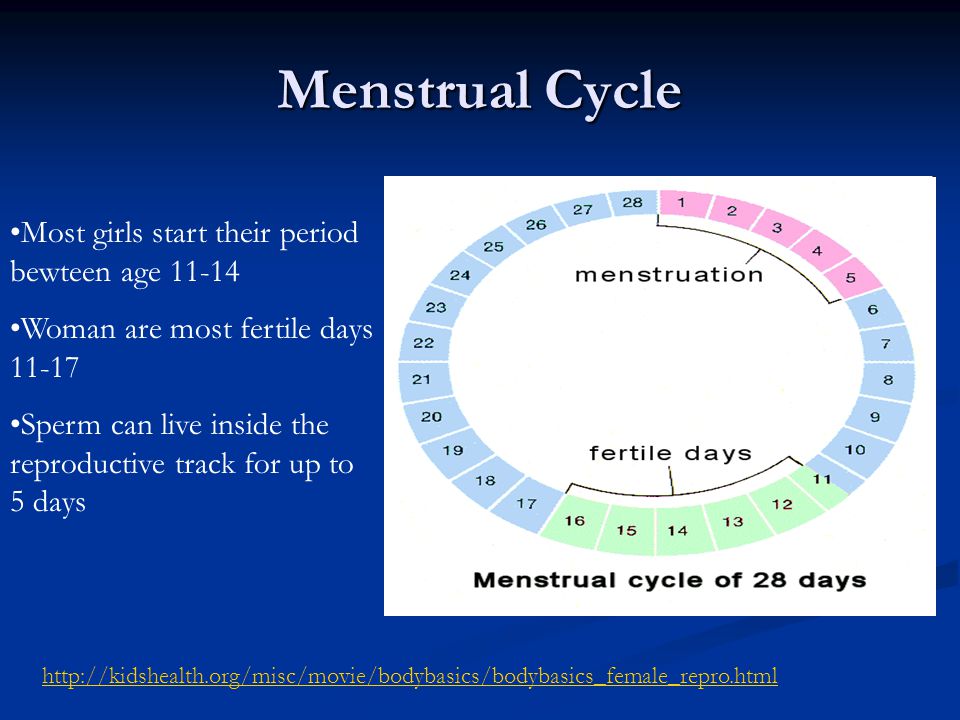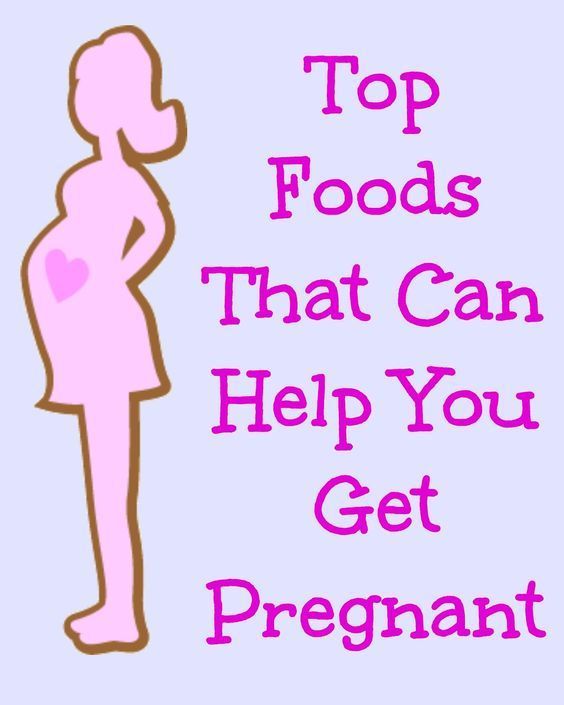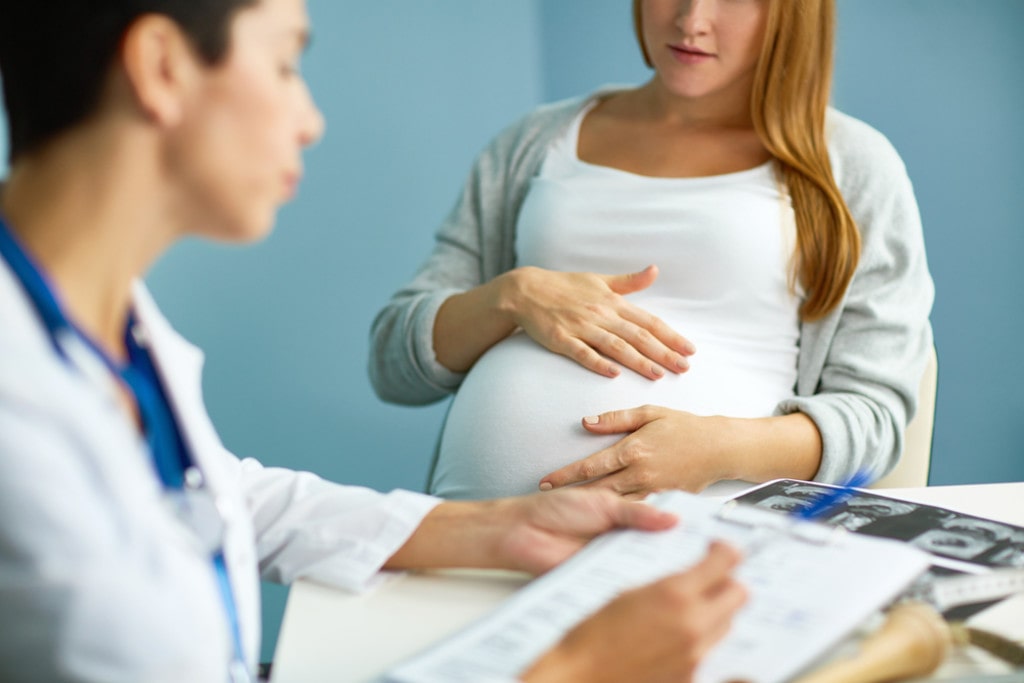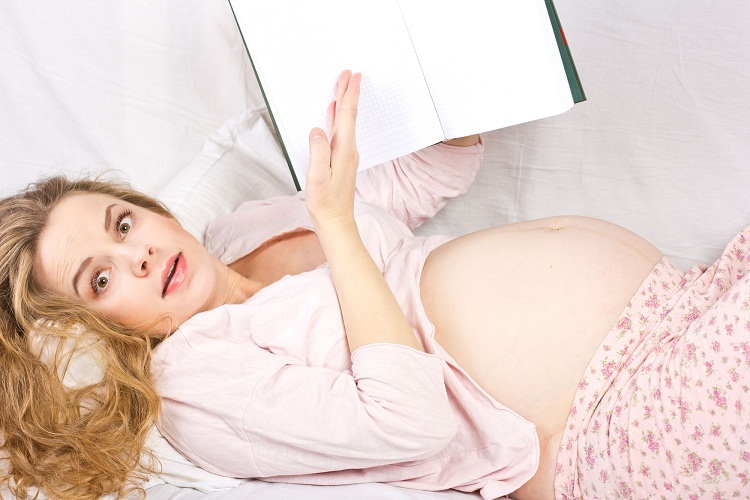Can you get pregnant 4 days before fertile window
Right Time For Sex , When Do You Ovulate ?
When are you more likely to conceive?
We’re talking about the 'fertile window’ – the days in a woman’s menstrual cycle when pregnancy is possible. The ‘fertile window’ depends on the length of the menstrual cycle, which varies among women.
The ‘fertile window’ is the day an egg is released from the ovary (ovulation) and the five days beforehand. Having sex (intercourse) during this time gives you the best chance of getting pregnant.
Ovulation Calculator
What day did you your most recent period start?
Number of days in your cycle Please select20 Days21 Days22 Days23 Days24 Days25 Days26 Days27 Days28 Days29 Days30 Days31 Days32 Days33 Days34 Days35 Days36 Days37 Days38 Days39 Days40 Days41 Days42 Days43 Days44 Days45 Days
Your ovulation day
Most fertile time
-
What is an ovulation calculator and how does it help you get pregnant?
This ovulation calculator or ovulation calendar can help you work out your most fertile time.
These are the days you are most likely to get pregnant.
It can also estimate your due date if you do become pregnant during your next fertile days.
Others ways to help you work out when you're ovulating:
- Notice changes in vaginal mucus
A few days before ovulation, you may notice your vaginal mucus becomes clear, slick and slippery, and feels a bit like egg white.
This is a sign that ovulation is about to happen. It’s the best time to have sex, as sperm travel more easily in this kind of mucus.
- Use an ovulation predictor kit
You can use a predictor kit from a supermarket or pharmacy, to test your urine for signs of ovulation. If you start testing your urine a few days before the day you next expect to ovulate, a positive result means you are going to ovulate within the next 24 to 36 hours (one to two days).
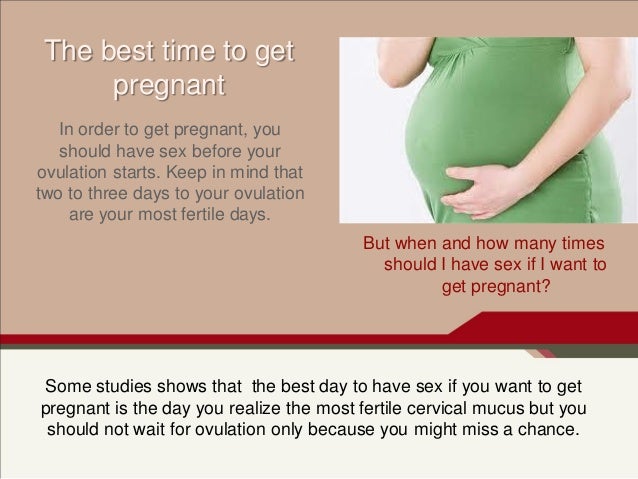
-
Facts about timing
Ovulation is when a mature egg is released from the ovary. The egg then moves down the fallopian tube where it can be fertilised. If sperm are in the fallopian tube when the egg is released, there is a good chance that the egg will be fertilised, creating an embryo, which can grow into a baby.
Pregnancy is technically only possible if you have sex during the five days before ovulation or on the day of ovulation. But the most fertile days are the three days leading up to and including ovulation. Having sex during this time gives you the best chance of getting pregnant.
By 12-24 hours after ovulation, a woman is no longer able to get pregnant during that menstrual cycle because the egg is no longer in the fallopian tube.
There’s almost no chance of getting pregnant if you have sex before or after the fertile window (but if you’re not trying to get pregnant, don’t rely on this – contraception is your best option!).
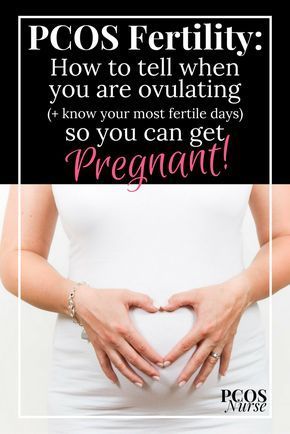
-
How to know when you’re ovulating
Knowing when you ovulate can help you plan for sex at the right time and improve your chance of getting pregnant. You can keep track of your menstrual cycles on a chart, in a diary, or on a free period-tracker app on your smartphone.
To work out the length of your menstrual cycle, record the first day you start bleeding (first day of your period). This is day 1. The last day of your cycle is the day before your next period begins.
- What is a ‘menstrual cycle’ and a ‘period’?
Some people think the ‘menstrual cycle’ and a ‘period’ are the same thing.
A period is when you bleed (or menstruate).

A menstrual cycle starts on the day when a period starts (day 1) and ends the day before the next period. A cycle’s length is considered normal if it’s between 21 and 35 days. They can vary between women and from one cycle to the next.
- Working out your ‘average’ menstrual cycle length
If your menstrual cycles are different lengths (most women’s cycles are) you can work out your average cycle length.
The number of days in a woman’s menstrual cycle can vary month to month. Periods are not always regular. It can be useful to work out an ‘average’ cycle length, based on the length of three menstrual cycles, to estimate when you’re most likely to be ovulating.
If you add the number of days in three cycles and divide the total number by three, it gives you your average cycle length.
Example
Sarah tracked her last three menstrual cycles by counting the time from the first day of one period, to the day before the next period.
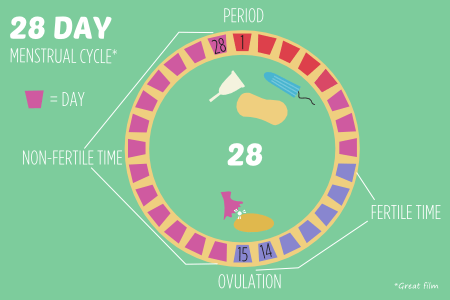
Cycle 1 was 28 days; Cycle 2 was 32 days; Cycle 3 was 27 days
28 + 32 + 27 = 87
87 divided by 3 = 29
So the average length of Sarah’s menstrual cycles is 29 days.
- Working out your most fertile days
When you know your average menstrual cycle length, you can work out when you ovulate.
Ovulation happens about 14 days before your period starts.
- If your average menstrual cycle is 28 days, you ovulate around day 14, and your most fertile days are days 12, 13 and 14.
- If your average menstrual cycle is 35 days ovulation happens around day 21 and your most fertile days are days 19,20 and 21.
- If you have shorter cycles, say 21 days, ovulation happens around day 7 and your most fertile days are days 5, 6 and 7.
Your most fertile days are the three days leading up to and including the day of ovulation.
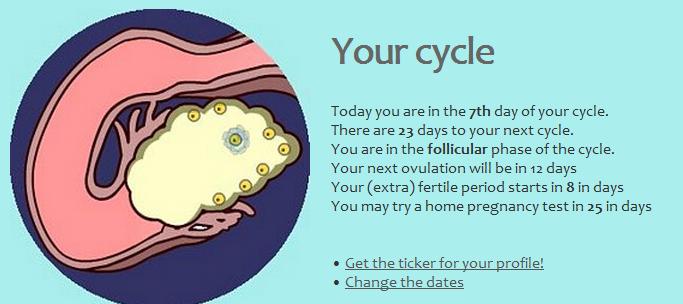
Some women have very irregular cycles or find it difficult to work out an average cycle length. This can make it hard to work out when ovulation happens. If it’s all too hard, having sex every 2-3 days covers all bases and improves your chance of getting pregnant.
Myth busting
- MYTH
A woman can get pregnant any time of the month.
- FACT
A woman can only get pregnant on a few days during her menstrual cycle.
Why?
Because eggs and sperm only live for a short time:
- Sperm live for around five days.
- Eggs can only be fertilised for around 24 hours (one day) after being released from the ovary.
Eggs and sperm need to come together at the right time for fertilisation to happen to create an embryo.
Getting the timing right
If you're trying to get pregnant, timing is everything. Dr Karin Hammarberg explains how to work out when you are ovulating and the right time to have sex to improve your chance of pregnancy.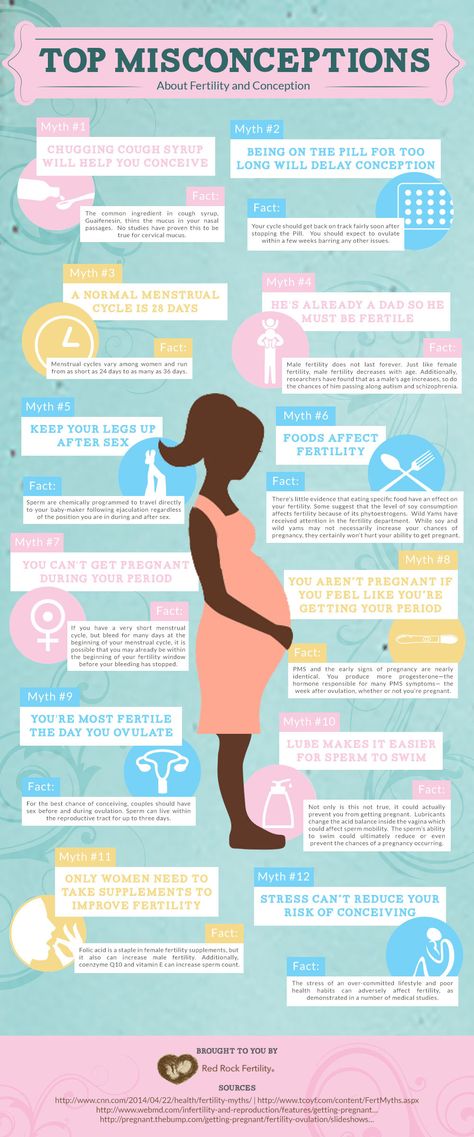
-
What are the chances?
Having sex as close as possible to the time of ovulation increases the chance of pregnancy.
If a woman has sex six or more days before she ovulates, the chance she will get pregnant is virtually zero.
If she has sex five days before she ovulates, her probability of pregnancy is about 10 percent.
If she has sex on the day of ovulation, or the two days before, the chance of getting pregnant is around 30 percent.
These are average figures and depend on a woman’s age.
When does preconception health begin?
Professor Sarah Robertson, Director of Robinson Research Institute, University of Adelaide, highlights the key time before pregnancy that your health is most important to ensure your child has the best start to life.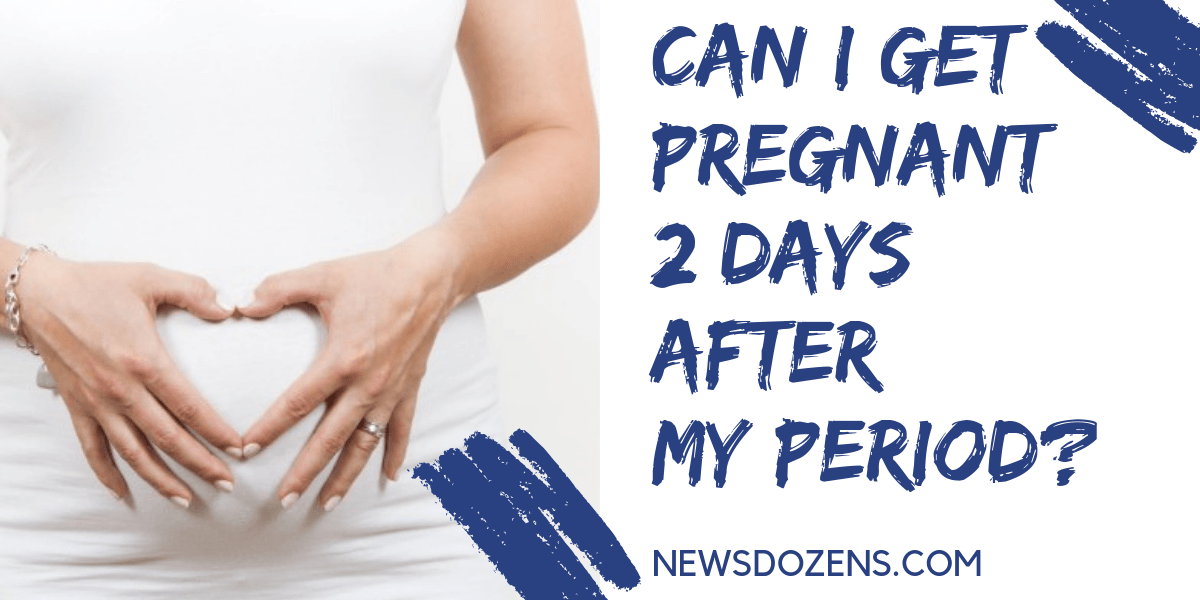
How to know you are ovulating
Kerry Hampton, a registered nurse and fertility specialist, discusses the importance of fertility awareness, and how to determine your fertile window to improve your chances of conceiving.
- References
- American Society for Reproductive Medicine, Optimizing natural fertility, https://www.reproductivefacts.org/news-and-publications/patient-fact-sheets-and-booklets/documents/fact-sheets-and-info-booklets/optimizing-natural-fertility/
- Berglund Scherwitzl, et al. (2015). Identification and prediction of the fertile window using Natural Cycles. The European Journal of Contraception and Reproductive Health Care, 20(5), 403-408. doi:10.3109/13625187.2014.988210
- Ecochard, R., et al. (2015). Self-identification of the clinical fertile window and the ovulation period.
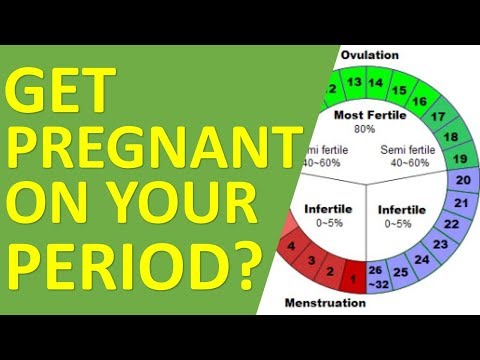 Fertility and Sterility, 103(5), 1319-1325.e1313. doi: http://dx.doi.org/10.1016/j.fertnstert.2015.01.031
Fertility and Sterility, 103(5), 1319-1325.e1313. doi: http://dx.doi.org/10.1016/j.fertnstert.2015.01.031 - Pfeifer, S., et al. (2017). Optimizing natural fertility: a committee opinion. Fertility and Sterility, 107(1), 52-58. doi: 10.1016/j.fertnstert.2016.09.029
- Stanford, J. B. (2015). Revisiting the fertile window. Fertility and Sterility, 103(5), 1152-1153. doi: http://dx.doi.org/10.1016/j.fertnstert.2015.02.015
- Stanford, et al. (2002). Timing intercourse to achieve pregnancy: current evidence. Obstetrics and Gynecology, 100(6), 1333-1341.
- Stephenson, J., et al. (2018). Before the beginning: nutrition and lifestyle in the preconception period and its importance for future health. The Lancet, 10.1016/S0140-6736(18)30311-8 doi: 10.1016/S0140-6736(18)30311-8
- Vélez, M. Pet al. (2015). Female exposure to phenols and phthalates and time to pregnancy: the Maternal-Infant Research on Environmental Chemicals (MIREC) Study. Fertility and Sterility.
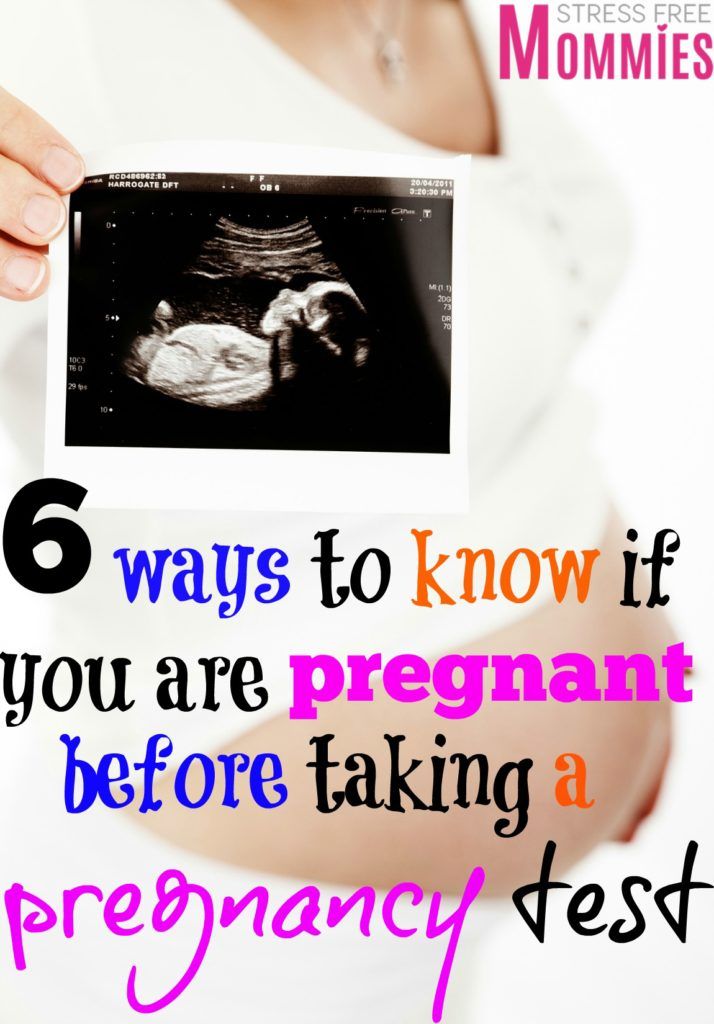 doi: 10.1016/j.fertnstert.2015.01.005
doi: 10.1016/j.fertnstert.2015.01.005 - Verón, G. L., et al. (2018). Impact of age, clinical conditions, and lifestyle on routine semen parameters and sperm kinematics. Fertility and Sterility, 110(1), 68-75.e64. https://doi.org/10.1016/j.fertnstert.2018.03.016
- Waylen, A. Let al. (2009). Effects of cigarette smoking upon clinical outcomes of assisted reproduction: a meta-analysis. Hum Reprod Update, 15(1), 31-44.
- Zenzes, M. T. (2000). Smoking and reproduction: gene damage to human gametes and embryos. Hum Reprod Update, 6(2), 122-131.
Page created on: 28/08/2018 | Last updated: 05/11/2022
How many days after ovulation can you get pregnant?
It is possible to become pregnant after ovulation. When a person has sex within 12–24 hours after the release of a mature egg, there is a high chance of conceiving.
Ovulation occurs when one of the ovaries releases a mature egg. This is the time when the body is ready to receive sperm for fertilization.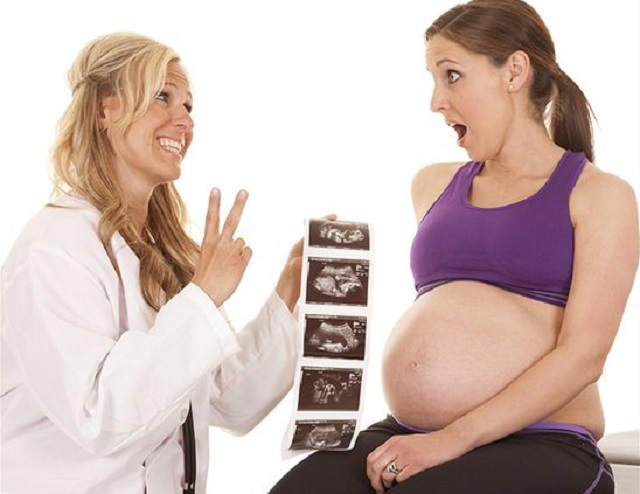
If fertilization does not occur, the egg disintegrates into the uterine lining. The body will then shed the remains during a person’s monthly period.
Ovulation lasts anywhere from 12–24 hours. After the ovary releases an egg, it survives for about 24 hours before it dies, unless a sperm fertilizes it.
If a person has sex days before or during the ovulation period, there is a high chance of conceiving. This is because sperm can survive up to 5 days in the cervix. Therefore, it is important to understand the fertile window.
The fertile window is the period of time during which it is possible to become pregnant from sex. This is the day of ovulation plus the amount of time that sperm can live inside the cervix before it fertilizes the egg.
According to the American College of Obstetricians and Gynecologists (ACOG), a person can become pregnant if they have sex anywhere from 5 days before until 1 day after ovulation.
Depending on the menstrual cycle, the fertile window may vary from one person to another.
To calculate the fertility window, a person should note the first day of a period until the next period occurs. This timeframe is the menstrual cycle. On average, most people who menstruate have a 28-day cycle.
However, according to the Office on Women’s Health, for some, it may last 21–35 days.
According to the ACOG, ovulation occurs around day 14 of the menstrual cycle.
A person with a 28-day cycle, for example, will have their fertile window 5 days before the ovulation date.
Pregnancy is possible 12–24 hours after ovulation. This is because the released egg can only survive 24 hours before the sperm can no longer fertilize it.
The likelihood of getting pregnant on the days before and after ovulation varies from one person to another.
An older study from 1995 looked at the timing of sexual intercourse in relation to ovulation and the likelihood of conception.
Out of 221 healthy women, there were 192 pregnancies. Researchers concluded they could estimate the odds of becoming pregnant on each day of the fertile window as between 10–33%, depending on the day.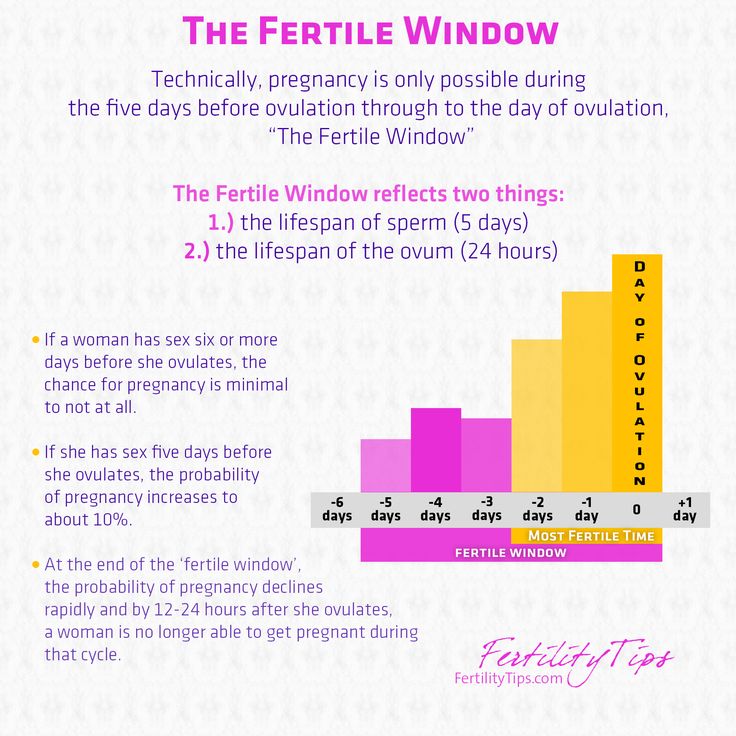
| 5 days before ovulation | 10% |
| 4 days before ovulation | 16% |
| 3 days before ovulation | 14% |
| 2 days before ovulation | 27% |
| 1 day before ovulation | 31% |
| Ovulation day | 33% |
The same study authors also note there could be a 12% chance of conceiving on either day 7 before ovulation and the day after ovulation.
However, the chances of becoming pregnant before or after ovulation depend on several factors, including:
- age
- frequency of sexual intercourse
- menstrual cycle
For those trying to conceive, tracking ovulation is crucial to ensure they identify the most fertile days in the menstrual cycle.
Here are some of the methods a person can use to track or predict ovulation.
Basal body temperature charting
Basal body temperature (BBT) is the temperature when the body is at rest.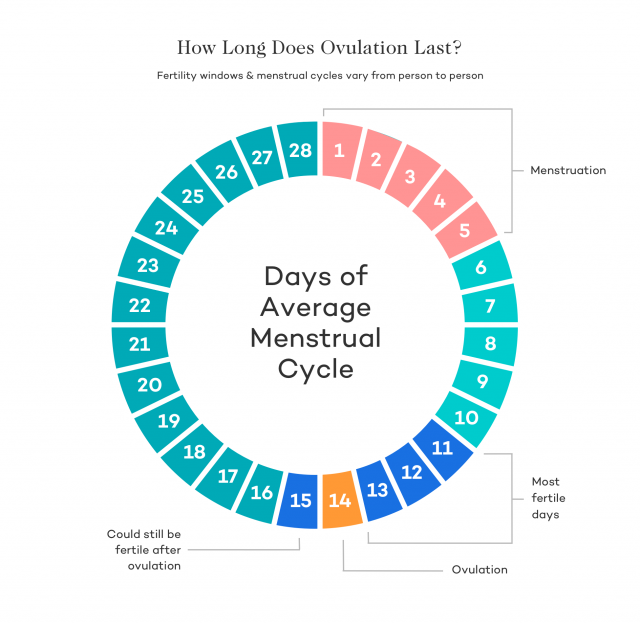
Charting BBT for a series of months by measuring every morning after waking up will help predict ovulation.
During or when ovulation approaches, there is a slight increase in BBT. A person can use a digital thermometer to track these small changes in temperature.
Monitoring BBT can help tell when ovulation occurs and therefore predict the days in the cycle when pregnancy is possible.
Ovulation predictor kits
Using ovulation predictor kits, such as test strips and digital tests, will help measure the level of luteinizing hormone (LH), which usually rises during ovulation.
A person needs to take tests for consecutive days to detect the rise in LH.
Once they notice a consistent rise, experts recommend having sex daily for the next couple of days to increase the chances of pregnancy.
Cycle charting apps
Several cycle apps, such as the Clue period tracker and Flo period ovulation tracker, can help calculate the ovulation period and fertile window.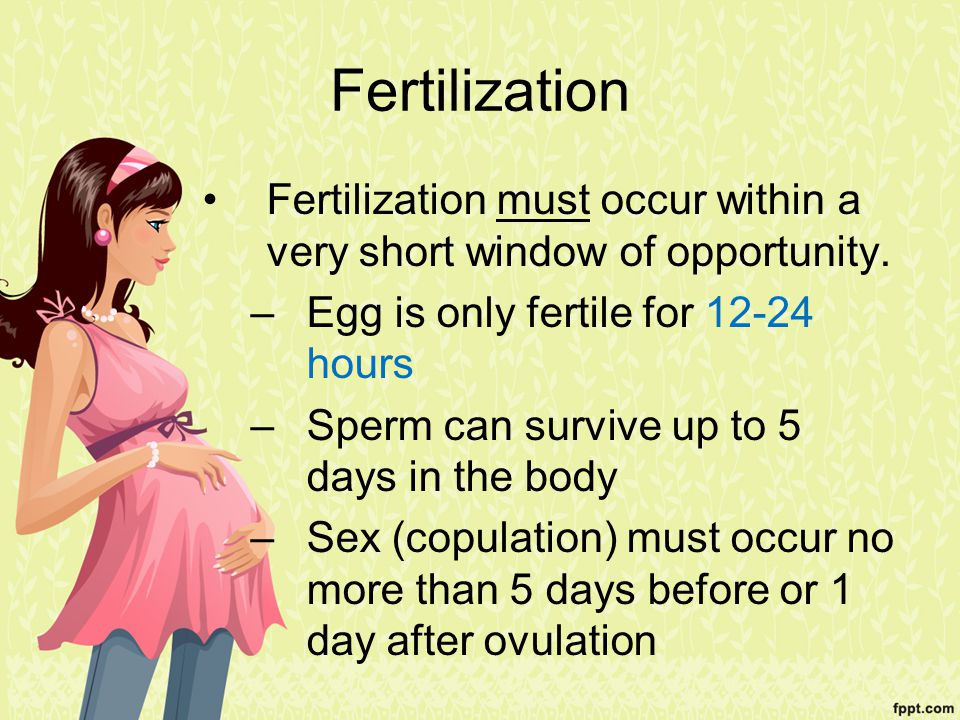
Charting ovulation using these apps will indicate the ovulation date and days when a person’s body is most fertile.
Fertility monitors
For people trying to conceive or wishing to avoid pregnancy, using fertility monitors to track ovulation can help people plan intercourse.
Fertility monitors work by measuring significant body changes, such as BBT, heart rate, and breathing.
By compiling this data, the fertility monitor can predict the fertile window.
Cervical mucus method
Observing cervical mucus can give an idea of when a person may be ovulating.
When ovulation approaches, the cervical mucus changes to a thin, clear, stringy, slippery consistency. It may look similar to raw egg whites.
The mucus allows the sperm to swim to the released egg during intercourse.
Ideally, this is the ideal time to have sex due to the high chances of becoming pregnant.
Watching ovulation signs, such as a slight increase in BBT, changes in cervical mucus, and increased sex drive, can help determine the best time to have sex to boost chances of becoming pregnant.
In addition, having sex during the fertile window increases the chances of conception. During this timeframe, the body is ready to receive sperm for fertilization.
On average, a menstrual cycle lasts between 21–35 days.
An irregular cycle or absent cycle that lasts fewer than 21 days or more than 35 days, can mean that a person is not ovulating.
A person should speak with a doctor if they do not become pregnant after 1 year of trying to conceive.
Age may also determine when to seek help. People between 35–40 years of age should speak with a doctor after 6 months of trying to get pregnant. For those above 40 years of age, a healthcare professional may run some fertility tests.
A doctor may also test for possible signs of infertility or if a person has ever had repeated miscarriages, pelvic inflammatory disease, endometriosis, prior cancer treatment, or a history of irregular periods.
A person can get pregnant 12–24 hours after ovulation, as a released egg can survive up to 24 hours within the cervix.
For those trying to conceive, it is crucial to understand the menstrual cycle.
Beyond this, a person can use methods, such as BBT charting, cycle charting apps, fertility monitors, changes in cervical mucus, and ovulation predictor kits to boost the chances of pregnancy.
When is a woman most fertile?
If you are a woman taking precautions to prevent pregnancy, or if you are thinking about pregnancy in some way in the future, the issue of fertility usually remains in the background.
The question of when a woman is most fertile has two aspects.
First, is the menstrual monthly cycle and the period when a woman is most fertile.
To figure out the arithmetic, a fertility calendar or an ovulation calculator will help. The second aspect of the question concerns biological age and the stage of life at which women are most fertile. In our article, we will look at the monthly cycle, the days that are the most fertile during this cycle, and various means of monitoring and predicting ovulation. This makes it possible to predict the time of maximum fertility with some accuracy.
This makes it possible to predict the time of maximum fertility with some accuracy.
Second , we look at the stages of fertility at various times in a woman's life and their impact on her ability to conceive.
It is well known that fertility peaks at age 20 and begins to decline after age 30; after 35 years, natural conception rates begin to drop sharply. However, in today's society, many women, for understandable financial and social reasons, choose to delay childbearing until the age of thirty. Thus, we are faced with the paradoxical situation where many women, who have long sought to prevent pregnancy in their younger years, find themselves in a situation where they begin to look for ways to increase their chances of conceiving.
When is a woman most fertile? What does the menstrual cycle show?
In a woman, the ability to conceive is maximum a day or two before and after ovulation. This is when the egg is released from the ovaries. You can calculate with a reasonable degree of accuracy when ovulation will occur, especially if your cycle is regular, anywhere between 24 and 35 days. Consider the start of your period (bright spotting) as the first day of your cycle, and the day before the next as the end of your cycle. Ovulation usually occurs 12-16 days before the start of the next cycle. Thus, if you have a regular 28-day cycle, then the indicator remains the same: ovulation occurs on the 12th-16th day. However, fertile time is not limited to these few days. Remember that you can get pregnant if you have unprotected sex at any time during the week before ovulation, as sperm can live in a woman's genital tract for up to seven days.
You can calculate with a reasonable degree of accuracy when ovulation will occur, especially if your cycle is regular, anywhere between 24 and 35 days. Consider the start of your period (bright spotting) as the first day of your cycle, and the day before the next as the end of your cycle. Ovulation usually occurs 12-16 days before the start of the next cycle. Thus, if you have a regular 28-day cycle, then the indicator remains the same: ovulation occurs on the 12th-16th day. However, fertile time is not limited to these few days. Remember that you can get pregnant if you have unprotected sex at any time during the week before ovulation, as sperm can live in a woman's genital tract for up to seven days.
Fertility specialists generally advise that if you are hoping to get pregnant, it is advisable to specifically schedule contacts around this time, as it can be difficult to calculate the exact day of ovulation, and trying to have sex on a schedule can cause unnecessary stress and anxiety.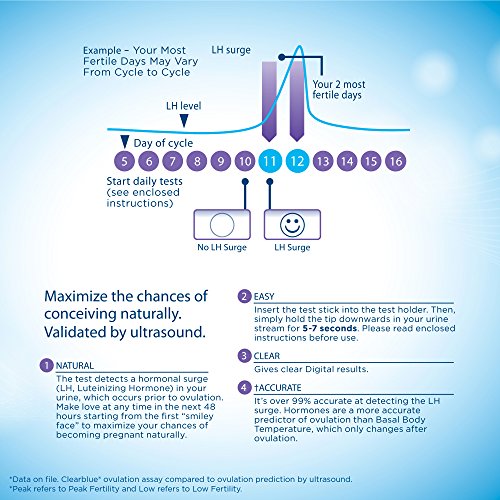 For the best chance of getting pregnant as long as there are no underlying fertility problems, it is recommended to have intercourse every 2-3 days during your cycle. In addition, fertility calendars, an ovulation test, and self-monitoring for signs of ovulation can help predict the ideal time to conceive.
For the best chance of getting pregnant as long as there are no underlying fertility problems, it is recommended to have intercourse every 2-3 days during your cycle. In addition, fertility calendars, an ovulation test, and self-monitoring for signs of ovulation can help predict the ideal time to conceive.
Menstrual calendar
It could be an old-fashioned pen and paper, a spreadsheet, or one of the many online calendars available. They are also known as ovulation calendars or ovulation calculators. They all do the same thing: keep track of your menstrual cycle dates and use the 12-16 day calculation outlined above to determine the days on which you are most likely to conceive.
Ovulation Tests
These are test kits that measure the level of luteinizing hormone (LH) in your urine. The essence of the measurement is to capture the surge in LH levels that occurs during your cycle a couple of days before ovulation. There are also tests that measure the same hormone pulsation but use a saliva sample.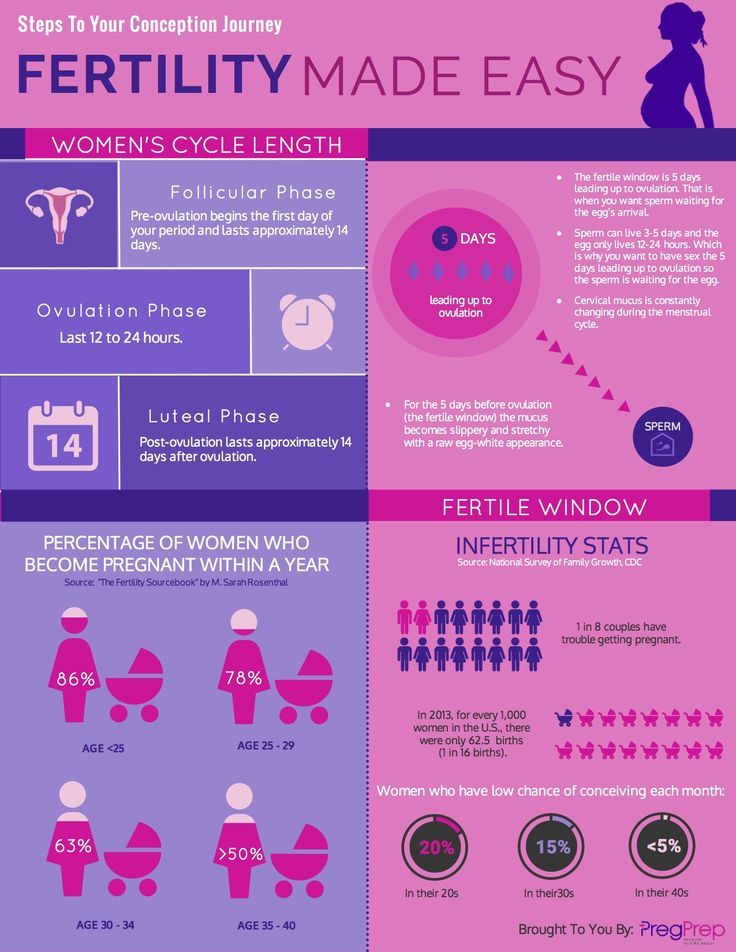 In these tests, saliva takes on the appearance of a fern-like pattern when it dries on glass. However, the most accurate analysis that allows you to track the LH peak is a urinalysis (rarely used in routine practice).
In these tests, saliva takes on the appearance of a fern-like pattern when it dries on glass. However, the most accurate analysis that allows you to track the LH peak is a urinalysis (rarely used in routine practice).
Self-monitoring for signs of impending ovulation
Self-monitoring includes taking temperature every morning after waking up, as well as monitoring the quality and consistency of vaginal mucus secretions. This must continue for several months so that ovulation can be tracked. This is the least reliable of the methods, because there can be many different causes of body temperature fluctuations (night rises, colds, blood sugar fluctuations), and in fact, many girls rightly find this procedure tedious and difficult to perform.
Is it possible to get pregnant before menstruation?
Share
0Is it possible to get pregnant before menstruation
Yes, but the probability is low. If you want to get pregnant, then it is better to choose days that coincide with the "fertility window" - this is the time five days before ovulation, immediately after ovulation, and up to 24 hours after. At this time, the chances of fertilization will be highest. This variation arose due to the fact that sperm remain alive in the uterus and fallopian tubes for up to five days, and the egg for up to two.
If you want to get pregnant, then it is better to choose days that coincide with the "fertility window" - this is the time five days before ovulation, immediately after ovulation, and up to 24 hours after. At this time, the chances of fertilization will be highest. This variation arose due to the fact that sperm remain alive in the uterus and fallopian tubes for up to five days, and the egg for up to two.
If, on the contrary, you would like to avoid conception, then with a high degree of probability nothing will happen before your period. However, the opportunity is still there. Therefore, if you are not planning on having a baby at the moment, be sure to use effective methods of contraception whenever you have penetrating sex. It can be, for example, a condom.
Why you can get pregnant even before your period
You can count the days for years, and then face a failure and an unplanned pregnancy. So, in 221 women with regular periods, the ability to conceive was checked for 696 cycles, as a result, only 30% of the fertility window completely coincided with the calculations, and 4-6% were able to become pregnant on the day they were waiting for the start of their period. It is quite difficult to accurately determine the time of ovulation, any violation shifts the window by several days, so no one can give a guarantee.
It is quite difficult to accurately determine the time of ovulation, any violation shifts the window by several days, so no one can give a guarantee.
Are there really "safe" days for sex?
More likely no than yes. The calendar method is an unreliable method of contraception. With a perfect count, in theory, 1-5 women out of 100 will become pregnant in a year, but in reality, 12-24 women. This method is definitely not suitable for an irregular cycle, for those who have bleeding between menstruation and who, for health reasons, absolutely cannot get pregnant. In addition, such contraception does not protect against sexually transmitted infections.
If, in addition to the calendar, keeping a diary of basal temperature and cervical mucus, as well as doing home ovulation tests, then reliability increases. But all this requires iron discipline and daily measurements for many months. If pregnancy is definitely not included in the plans, it is better to choose a non-calendar method as contraception.